Hotpoint EW93 User Manual
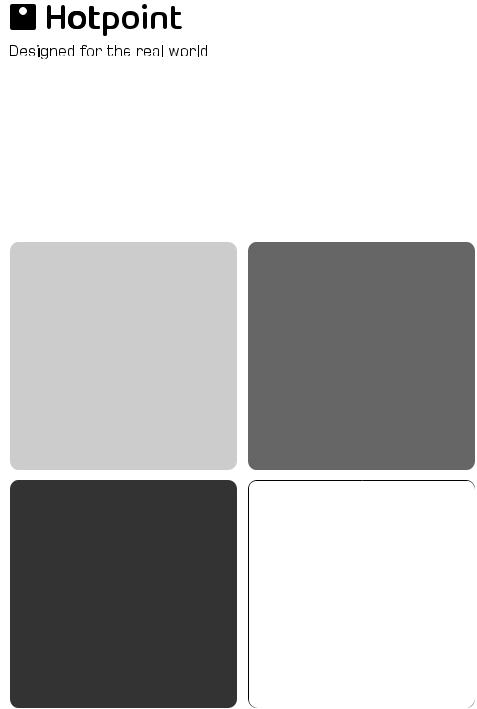
Instructions
EW93

Contents
|
Page |
Introduction |
3 |
Installation |
4 |
Safety Information |
5-6 |
The main parts of your Cooker |
7 |
The cooking systems in your Cooker |
8-9 |
Temperature Conversion Chart |
10 |
The Controls |
11-12 |
Use and Care of the Ceramic Hob |
13-15 |
Solarplus Grill |
16-17 |
Top Oven – Conventional Cooking |
18 |
Top Oven Cook Charts |
19-20 |
Main Oven - The Smart Cooking System |
21-22 |
Main oven - Smart Cooking System Cook Charts |
23-26 |
Additional Main Oven Smart Cook Functions - Auto Cooking |
27-30 |
Care and Cleaning |
31-33 |
If something goes wrong |
34 |
Hotpoint Service Cover |
35 |
Key Contacts |
back page |
Retention of this Instruction Book
This Instruction Book must be kept handy for reference as it contains important details on the safe and proper use of the appliance.
If you sell or pass the appliance to someone else, or move house and leave it behind, make sure this Book is also provided so the new owner can become familiar with the appliance and safety warnings.
2
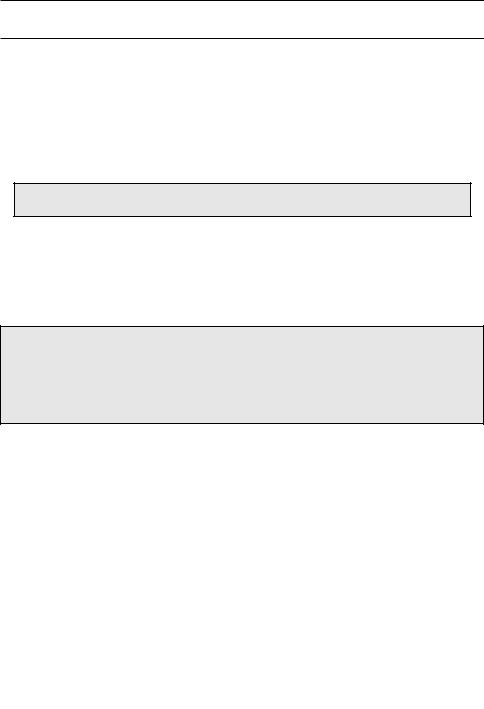
Introduction
Your new appliance is guaranteed* and will give lasting service. This guarantee is only applicable if the appliance has been installed in accordance with the installation instructions detailed in this booklet.
To help make best use of your cooking equipment, please read this booklet carefully.
The cooker is designed specifically for domestic use and responsibility will not be accepted for use in any other installation.
When the cooker is first used an odour may be emitted, this will cease after a period of use
When first using the cooker ensure that the room is well ventilated (e.g. open a window or use an extractor fan) and that persons who may be sensitive to the odour avoid any fumes.
It is suggested that any pets be removed from the room until the smell has ceased. This odour is due to temporary finish on oven liners and elements and also any moisture absorbed by the insulation.
*The guarantee is subject to the provisions that the appliance:
(a)Has been used solely in accordance with the Users Instruction Book.
(b)Has been properly connected to a suitable supply voltage as stated on the rating plate attached to this equipment.
(c)Has not been subjected to misuse or accident or been modified or repaired by any person other than the authorised employee or agent.
(d)Has been correctly installed.
This appliance conforms to the following EEC Directives:
Electromagnetic Compatibility |
Low Voltage Equipment |
89/336/EEC |
73/23/EEC |
92/31/EEC |
93/68/EEC |
93/68/EEC |
|
3
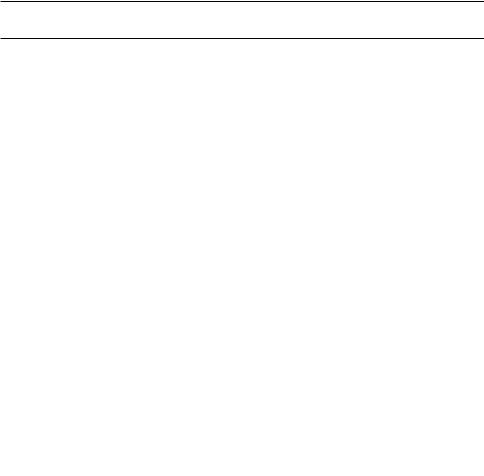
Installation
WARNING – THIS APPLIANCE MUST BE EARTHED.
Mains Connection
Your cooker should have been checked to ensure that the voltage corresponds with your supply voltage, this is stated on the rating plate, which is situated on the front of the plinth.
The cooker must be connected by a competent person such as one who is a, NICEIC registered contractor to a suitable double-pole control unit with a minimum rating of 32A and a minimum contact clearance of 3mm (applicable to newer properties, older properties where a 30A double pole control unit and a minimum contact clearance of 3mm is acceptable).
The double pole control unit should be fitted adjacent to the cooker, in accordance with IEE regulations. The control unit must be within 2 metres of but not directly above the appliance and should be easily accessible in the event of an emergency.
The power supply cable should conform to B.S.6004 with a conductor size of 6mm2, minimum.
Access to the mains terminals is gained by removing the rear access cover. The mains cable must pass through the cable clamp adjacent to the terminal block. Sufficient cable should be used to allow the cooker to be pulled out for servicing.
Ensure that the mains cable is routed away from any brackets affixed to the rear panel and is not trapped to the rear wall when pushing the cooker into position between cabinets.
Levelling
Two rear wheels and two front feet are fitted which can be adjusted up or down to set the height (900mm - 915mm) and level the cooker.
1.The rear wheels can be raised or lowered from the BACK of the cooker by adjusting the levelling screws ‘A’ in the plinth.
2.The front feet can be simply screwed in or out to lower or raise the front of the cooker. CAUTION: Some soft floor coverings may get damaged if the cooker is not moved carefully. NOTE: Ensure oven shelves are level by using a spirit level on the rod shelves.
VIEWED FROM REAR
Siting the Cooker
The cooker is designed to fit between kitchen cabinets spaced 600mm apart. The space either side need only be sufficient to allow withdrawal of the cooker for servicing. It can be used with cabinets one side or both as well as in an angled corner setting. It can also be used freestanding.
Adjacent side walls which project above hob level, must not be nearer to the cooker than 150mm and should be protected by heat resistant material. Any overhanging surface or cooker hood should not be nearer than 650mm.
Note: This appliance must NOT be fitted on a platform.
Moving the Cooker
Before moving your cooker, switch off at the cooker control unit, ensure that it is cool. Open the grill door sufficiently to allow a comfortable grip on the underside front edge of the oven roof, avoiding any grill elements.
Radio Interference
This appliance conforms to EN 55014 regarding suppression of radio and television interference.
Note: Take care in moving the cooker as it is heavy. Take care to ensure that any floor covering is not damaged.
4

Safety Information
When used properly your appliance is completely safe but as with any electrical product there are certain precautions that must be observed.
PLEASE READ THE PRECAUTIONS BELOW BEFORE USING YOUR APPLIANCE.
Always
●Remove all packing from the appliance before switching on for the first time.
●Understand the controls prior to using the appliance.
●Keep children away from the appliance when cooking as the surfaces will get extremely hot during and after use.
●Turn controls off when not in use.
●Stand back when opening an oven door to allow any build up of steam or heat to disperse.
●Always use dry good quality oven gloves when removing items from the oven/grill.
●Always place pans centrally over the hotplate making sure handles are kept away from the edge of the hob and cannot become heated by other hotplates or pans.
●Always take care to avoid heat or steam burns when operating the controls.
●Always turn off the electricity supply at the wall switch and allow the appliance to cool before cleaning (or changing an oven lamp if fitted).
●Always make sure the shelves are in the correct position before switching on the oven or grill.
●Always keep the oven/grill door closed when the appliance is not in use.
●Always keep the appliance clean as a build up of grease or fat from cooking can cause a fire.
●Always follow the basic principles of food handling and hygiene to prevent the possibility of bacterial growth.
●Always keep ventilation slots clear of obstructions.
●Always refer servicing to a qualified appliance service engineer.
●Always take care when removing items from the grill compartment when the lower oven is in use as the contents will be hot.
●Always turn off the electricity supply to the appliance at the wall switch should any glass panel (if fitted) crack or shatter and then DO NOT USE THE APPLIANCE until repaired.
●During use, the oven becomes hot. Care should be taken to avoid touching heating elements inside the oven.
5

Safety Information
Never
●Never stare at Halogen heating units.
●Never leave children unsupervised where a cooking appliance is installed as all surfaces will be hot during and after its use.
●Never allow anyone to sit or stand on any part of the appliance.
●Never store items above the appliance that children may attempt to reach.
●Never leave anything on the hob surface when unattended and not in use.
●Never remove the oven shelves whilst the oven is hot.
●Never heat up unopened food containers as pressure can build up causing the container to burst.
●Never store chemicals/food stuffs or pressurised containers in or on the appliance, or in cabinets immediately above or next to the appliance.
●Never place flammable or plastic items on or near the hob.
●Never fill a deep fat frying pan more than 1/3 full of oil, or use a lid.
DO NOT LEAVE DEEP FAT FRYING PANS UNATTENDED WHILE COOKING.
●Never use the appliance as a room heater.
●Never use the grill to warm plates.
●Never dry any items on either the hob or oven doors.
●Never install the appliance next to curtains or other soft furnishings.
●Never operate the grill with the grill door closed as this will cause the appliance to over heat.
●Never use ‘steam cleaners’.
SAFETY ADVICE IN CASE OF A CHIP-PAN FIRE
In the event of a chip pan fire or any other pan fire.
1.TURN OFF THE COOKER APPLIANCE AT THE WALL SWITCH.
2.COVER THE PAN WITH A FIRE BLANKET OR DAMP CLOTH, this will smother the flames and extinguish the fire.
3.LEAVE THE PAN TO COOL FOR AT LEAST 60 MINUTES BEFORE MOVING IT. Injuries are often caused by picking up a hot pan and rushing outside with it.
NEVER USE A FIRE EXTINGUISHER TO PUT OUT A PAN FIRE as the
force of the extinguisher is likely to tip the pan over.
Never use water to extinguish oil or fat fires.
6
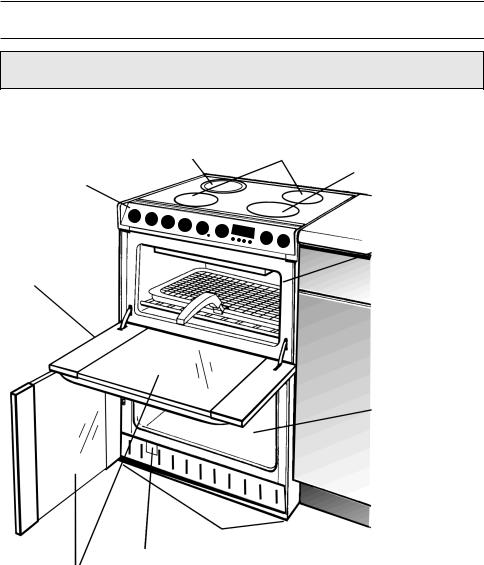
The Main Parts of your Cooker
WARNINGS: DO NOT TOUCH THE OVEN DOORS WHEN THE OVEN IS IN USE AS THESE AREAS CAN BECOME HOT.
Dual Circuit |
|
Solarglo Cooking |
Ceramic Hob with Two |
Zone |
Solarglo Cooking Zones |
Control Panel and Timer
Drop Down
Top Oven
Door
|
Adjustable feet front |
Rating plate |
Adjustable wheels at rear |
Removable Inner Glass panel |
|
Halogen Solarglo Plus
Top Oven
–Dual Grill and Conventional Cooking.
Fittings supplied: One oven shelf. Grill pan with grid and handle. Catalytic side liners.
Main Oven
– Smart Multifunction Fittings supplied:
Two oven shelves. Meat pan. Catalytic sides and back panels.
NOTE: To keep the controls cool when the appliance is used, a gentle flow of air may be blown from beneath the control panel. If the appliance is still warm, this cooling fan may run on or restart itself when all controls have been turned off.
This is normal and is not a fault.
The fan will stop once the appliance has cooled.
NOTE: Children should not be allowed to play with the appliance or tamper with the controls.
7

The cooking systems in your Cooker
Your new cooker is equipped with a number of different cooking systems:
1. Conventional Heating (Top Oven)
- with upper and lower heat. This system is particularly suitable for roasting and baking on one shelf only.
2. Variable Grilling (Top Oven)
- the oven can also be used for conventional grilling with a full or half width fully controllable grill.
Note: The Top Oven door should be open when grilling.
3. Defrost (Main Oven)
- the fan located on the oven wall circulates the air at room temperature around the food. Recommended for thawing any type of food but in particular delicate foods not requiring heat. The thawing time is roughly halved compared to defrosting in still air.
4. Fan Oven (Main Oven)
- the fan oven operates by constantly blowing heated air, from an element wrapped around the fan, into the oven. This gives improved efficiency and in general, enables the use of lower temperatures for cooking. It also means that there is less need to be particular about shelf positions and that you can bake at more than one level simultaneously (Batch Baking).
5. Traditional (Main Oven)
- the upper and lower heating elements are switched on in this position. The traditional oven brings an outstanding level of temperature distribution and reduced consumption. In traditional cooking use only one rack to ensure good heat distribution. By using the various shelf positions available you can balance the quantity of heat between the upper and lower part. If cooking requires more heat from below or above, use the bottom or top shelves respectively.
6. Roast Chicken (Main Oven)
- specially created for cooking excellent roast poultry. This mode can be used to roast chickens, duck, turkey and other poultry to perfection. Each heating element is used in the cycle to guarantee a homogeneous temperature within the oven.
8

The cooking systems in your Cooker
7. Roast Meats (Main Oven)
- specially created for cooking joints of meat. The mode raises the temperature in the oven to a very high heat for the first 10 minutes of cooking to seal the outside of the joint and retain the juices of the meat throughout cooking. After this, the temperature is reduced to the set temperature using each element in turn to guarantee a homogenous temperature for the remainder of the cooking period.
8. Bread (Main Oven)
- this mode is ideal for baking breads or any type of food including raising agents. The elements raise the temperature slightly higher at the start of the cooking period to encourage raising but reduce it later to prevent cracking and over browning of the top surface. Again all elements and the fan are used.
9. Sponges (Main Oven)
- this mode uses all the elements and the fan to hold the oven centre temperature within a range of only a few degrees. This type of stable temperature control is ideal for cooking sponge cake to perfection.
10. Casseroles (Main Oven)
- all heating elements are used but without the fan. This creates a traditional oven heating style but with gentle heating control, ideal for casseroles and stews. This mode remains unsurpassed in cooking dishes requiring slow cooking with constant addition of liquids.
11. Pizza (Main Oven)
- Once at temperature the high heat is maintained by the top and base elements (with the majority coming from the base). This ensures crispy light pizza bases without overcooking or drying out the topping. The pizza oven function is particularly recommended for foods requiring a high quantity of heat. Use only one shelf at a time.
12. Fish (Main Oven)
- this mode provides gently pulsing top and bottom heat to lightly poach fish dishes without overcooking or drying out.
9

Temperature Conversion Chart
Gas |
|
Main |
Main |
|||
˚F |
Conventional |
Fan |
||||
Mark |
||||||
|
Oven |
Oven |
||||
|
|
|
|
|||
|
|
|
|
|
|
|
1 |
/ |
2 |
250 |
120 |
100 |
|
|
|
|||||
|
|
|
|
|
||
|
1 |
275 |
140 |
120 |
||
|
|
|
|
|||
2 |
300 |
150 |
130 |
|||
|
|
|
|
|||
3 |
325 |
160 |
140 |
|||
|
|
|
|
|||
4 |
350 |
180 |
160 |
|||
|
|
|
|
|||
5 |
375 |
190 |
170 |
|||
|
|
|
|
|||
6 |
400 |
200 |
180 |
|||
|
|
|
|
|
||
|
7 |
425 |
220 |
200 |
||
|
|
|
|
|||
8 |
450 |
– |
210 |
|||
|
|
|
|
|||
9 |
475 |
– |
220 |
|||
|
|
|
|
|
|
|
Temperatures The recommended temperatures given are for conventional and fan ovens. When using a fan oven it will be necessary to reduce the cooking time by 10 minutes per hour and lower the temperature by up to 20˚C.
Also, in the majority of cases, it is not necessary to pre-heat the oven.
However, pre-heating is recommended when cooking items such as Yorkshire puddings, whisked sponges and bread. Your experience with the cooker will enable you to select the cooking time and temperature best suited for your recipe.
Condensation Condensation may become evident on the inner door and water may drip through the vent. This is normal when heat and moisture are present and may be a result of any of the following:
1.Kitchen temperature and ventilation.
2.The moisture content of the food
eg. meat, roast potatoes, Yorkshire pudding, roasting meat, etc.
3.The quantity of the food being cooked at any one time.
10
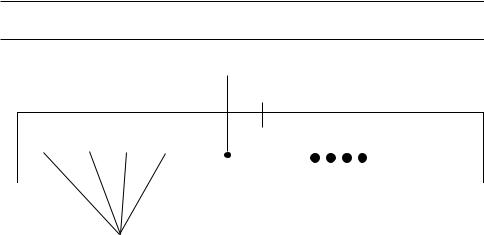
The controls
Switch on the electricity supply to the cooker at the Cooker Control Unit.
Top Oven Neon
Main Oven
Selector

|
|
|
|
|
|
|
|
|
|
|
|
|
|
|
|
|
|
|
|
|
|
|
|
|
|
|
|
|
|
|
|
|
|
|
|
|
|
Grill |
|
|
|
|
|
|
Main Oven |
|
Control |
||
|
|
|
|
|
|
|
|
||
|
|
|
Top Oven |
Display |
|
|
|
||
|
|
|
Main Oven |
||||||
|
|
|
|
|
|||||
|
|
|
Control |
|
|
||||
|
|
Hob Controls |
|
|
Time/Temperature |
||||
|
|
|
|
|
|
||||
|
|
|
|
|
|
|
Control |
||
Hob Controls |
As each control knob is turned clockwise, numbers from 1 - 6 on the control |
||||||||
|
|
knob increase. Setting 6 is the highest/hottest and gives 100% power. |
|||||||
|
|
Setting 1 is the lowest/coolest and gives about 7% power. |
|||||||
|
|
Variable power is obtainable on each of the heating areas by selecting any |
|||||||
|
|
number between 1 & 6. |
|
|
|
|
|
||
Left Rear Control
Grill Control -
Top Oven
Top Oven Control
Notes
This is to control a dual circuit plate with two elements. By turning the knob clockwise the whole hotplate is switched on, numbers 1-4 on the control knob, 4 is the highest setting. With the knob turned anti-clockwise, only the inner part of the hotplate is switched on, this is also indicated by numbers 1- 4 on the control knob, 4 is the highest setting. Variable power for either the whole or the inner part of the hotplate is obtained by selecting any number between 1 & 4.
The off position is identified by an ‘0’.
The hob hot warning light will operate soon after any of the heating areas are switched on. It will remain illuminated until the ceramic surface has cooled down.
The grill control will not operate unless the top oven control is in the ‘0’ off position.
The grill control provides fully variable heat control for either the twin grill or single (left hand side) grill by selecting any number between 1 & 4. When turned clockwise the twin grill will be switched on and any power
setting from 1 - 4 can be selected. The power level numbers are indicated on the control knob.
When turned anti-clockwise the single grill will be switched on and any power setting from 1 - 4 can be selected. The power level numbers are indicated on the control knob.
The off position is identified by an ‘0’.
This control switches on the top and bottom heating elements in the top oven. The temperature in the oven can be set anywhere between 100˚C and 220˚C. The red thermostat light will glow initially and remain on until the oven reaches the required temperature. It will then cycle off and on, as the oven thermostat maintains the correct temperature.
The off position is identified by an ‘0’.
Never operate both the top oven control and the grill control together.
The grill will not operate unless the top oven control is in the ‘0’ off position.
11
